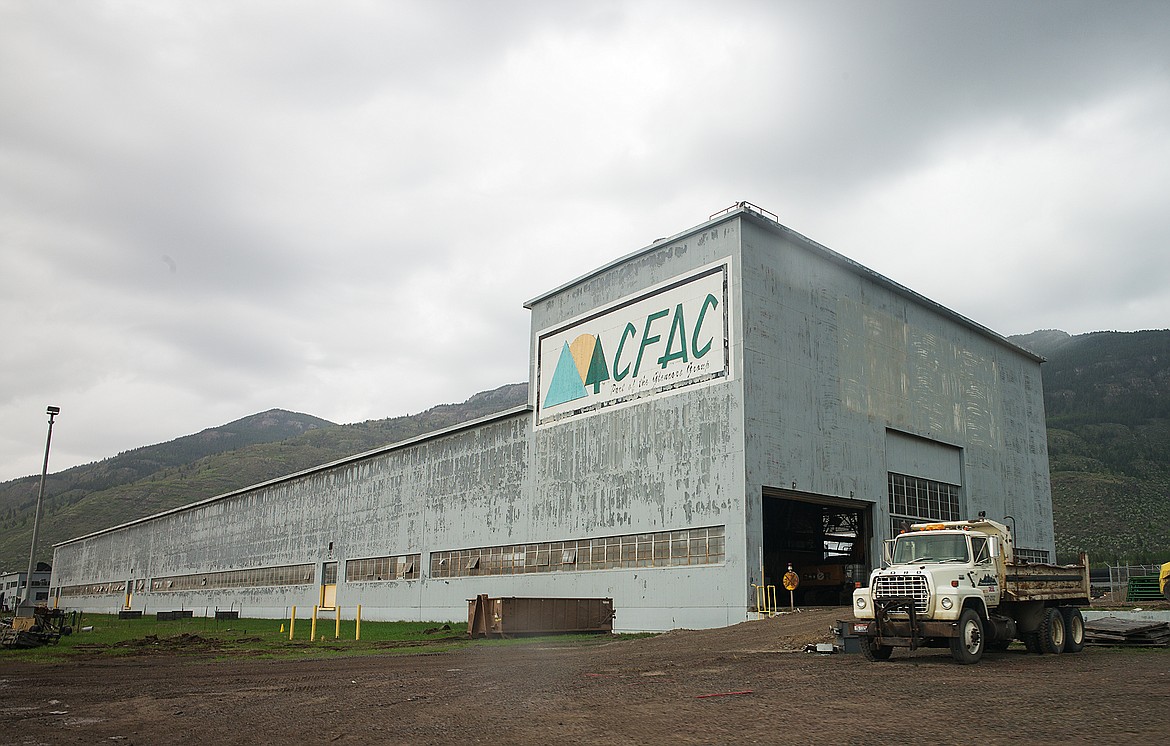CFAC pursuing tenants, even as Superfund work continues
The Columbia Falls Aluminum Co. is actively pursuing tenants even as it undergoes the Superfund cleanup process.
Local manager and engineer John Stroiazzo said the company gets about three to four inquiries a month on using some of the company’s remaining buildings. He said he had talks with an interested party last week.
“They’re good buildings,” Stroiazzo said. “They could be renovated and used for something.”
If someone has an idea or proposition, Stroiazzo said the company would be willing to listen to it.
Much fanfare was made a couple of years ago when Whitefish Energy was eyeing the defunct site for a possible transformer manufacturing facility. That plan never came together. Stroiazzo said he hadn’t even heard of the company.
CFAC’s parent company, Glencore, isn’t tearing down all the buildings at the site. The fabrication plant and three other warehouses, as well as the administration offices will remain.
The fabrication building is of particular value, Stroiazzo noted, because it has rail service into the building. It also has a Bonneville Power substation nearby and sewer and water.
To date, 29,609 tons of hazardous waste have been disposed of and 131,324 tons of material, both metals and carbon, have been recycled. Most of that has been hauled out by rail.
All but one potroom at the site has been demolished. That room, as well as several silos that were used to store cryolite and fluoride, still have to be taken down. The concrete superstructure of the potrooms will remain, but the basement floors have been punctured, so water drains through them, Mike Cirian, project manager for the Environmental Protection Agency said. The basements themselves are being filled with gravel mined from the site itself.
Cirian said the EPA would allow a business to operate on the site, as long as it didn’t disturb the Superfund area — the landfills and old dumps behind the plant are where the contamination appears to be most concentrated.
Cirian said the EPA has tested the concrete and it hasn’t held contaminants. The edge of concrete is of greater concern, where contaminants can run off. Cirian said in the next round of tests to be completed this summer, the company will do a multitutde of spoil borings where the plant once sat to look for contamination. It won’t put water wells on the old plant site itself, as the plant is surrounded by water wells to begin with, and eight more are going in this spring and summer as part of Phase II of the remediation study.
All told, it will take about 450,000 cubic yards of material to fill the basements alone, Stroiazzo said. The potrooms should be completely gone by November or December, and the entire demolition should be finished by the first quarter of 2019.
Calbag Resources is doing the demolition.
The tour group last week got a look at one of the water test wells that was drilled near the Aluminum City neighborhood to see if contaminants are reaching its groundwater. To date, household wells at Aluminum City have not tested above safe water drinking thresholds for contaminants.
The groundwater supply near the north end of the plant has shown high concentrations of cyanide and fluoride, though those levels in preliminary tests have dropped as the water flows underground toward the Flathead River.
All told, there are more than 60 groundwater monitoring wells on the site. They will be sampled this June and again in the fall as part of Phase II of the remediation investigation.
The plan is to take 425 more soil samples this year, 33 sediment samples, 50 porewater samples, 152 groundwater samples and 103 surface water samples. They’ll also do a “background” study, where soil and water from an area off site is compared to the CFAC site, noted Mike Ritorto of Roux Associates, the environmental firm doing the sampling work for CFAC.
Roux does the sampling, which is paid for by the company and the results are then vetted and analyzed by both the EPA and the state Department of Environmental Quality.
DEQ is the regulatory agency overseeing the demolition.
After the remedial investigation is complete and the baseline risk assessments are established, a plan to clean up the site will be formulated. That’s still a few years out — scheduled for 2021.
The risk assessment is a document that details the future risk to the environment and human health posed by the site.
While things are going well at the site, the company isn’t interested in giving a local bicycle group an easement for a bike path on property it owns on the south side of the Flathead River.
The company negotiated a licensing agreement with the Gateway To Glacier Trail group for a bike-pedestrian path along the Flathead River. The group approached the City of Columbia Falls earlier this spring about the city taking over long-term administration of the license, but when the city presented it to its insurance carrier, the carrier said it wouldn’t cover the path.
City attorney Justin Breck, in turn, suggested the group garner an actual easement, which is a real property right. Insurance would cover it then.
But when asked about that possibility, company spokeswoman Cheryl Driscoll said the company had spent a lot of time and effort on the license.
“We’re not in a position to grant an easement,” she said.






